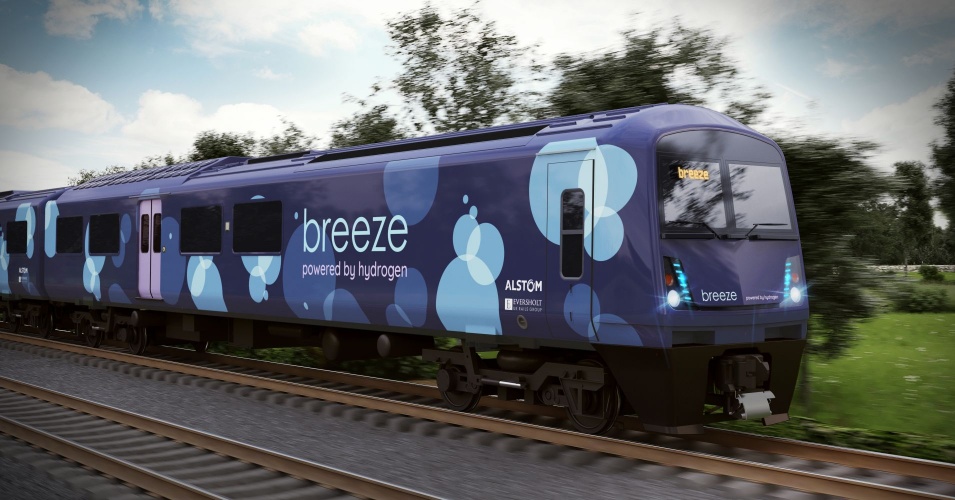
Currently known as ‘Breeze’, the project is being led by Alstom in partnership with Eversholt Rail. Alstom’s Widnes facility will manage the conversion of the Breeze trains, transforming the electric Class 321s to Hydrogen Multiple Unit (HMU) powered vehicles. According to Alstom, the finalised design is the first to allow a hydrogen train to fit within the standard UK loading gauge.
“The railways need to decarbonise and the government has rightly set out a goal to eliminate diesel rolling stock by 2040,” said Nick Crossfield, Alstom UK & Ireland managing director. “Hydrogen trains offer an ideal solution for routes which are unlikely to benefit from electrification, and our innovative engineering solution means they can now fit within the UK loading gauge and can quickly be ready to roll on Britain’s railways.”
Last September saw Alstom introduce its Coradia iLint hydrogen trains in Germany, where they are operating regular daily passenger services. The company also claims that the president of France’s Occitanie region has expressed interest in adopting its hydrogen train technology.
“In Germany, Alstom’s hydrogen trains are already transporting passengers in the comfort and quiet that is characteristic of these trains,” said Crossfield. “The Breeze offers British rail users the opportunity to share in the pleasure that is a journey on a hydrogen train.”
As well as producing no direct emissions other than water, the new trains will also incorporate more room for passengers than the trains they are intended to replace. Breeze’s biggest opportunity is likely to be rural and inter-urban routes - where electrification has not been rolled out - and Alstom and Eversholt Rail are currently exploring routes for fleet introduction and the associated fuel infrastructure required.
“Combining the experience gained from the successful Coradia iLint and Class 321 Renatus programmes will deliver a hydrogen-powered multiple unit product that will meet sponsors’ and train operators’ aspirations for the earliest possible fleet introduction,” said Eversholt’s client relations director Stephen Timothy.











Radio wave weapon knocks out drone swarms
I hope they have assessed how easy it is to shield a drone against the attack. Hopefully the shielding would add too much weight.